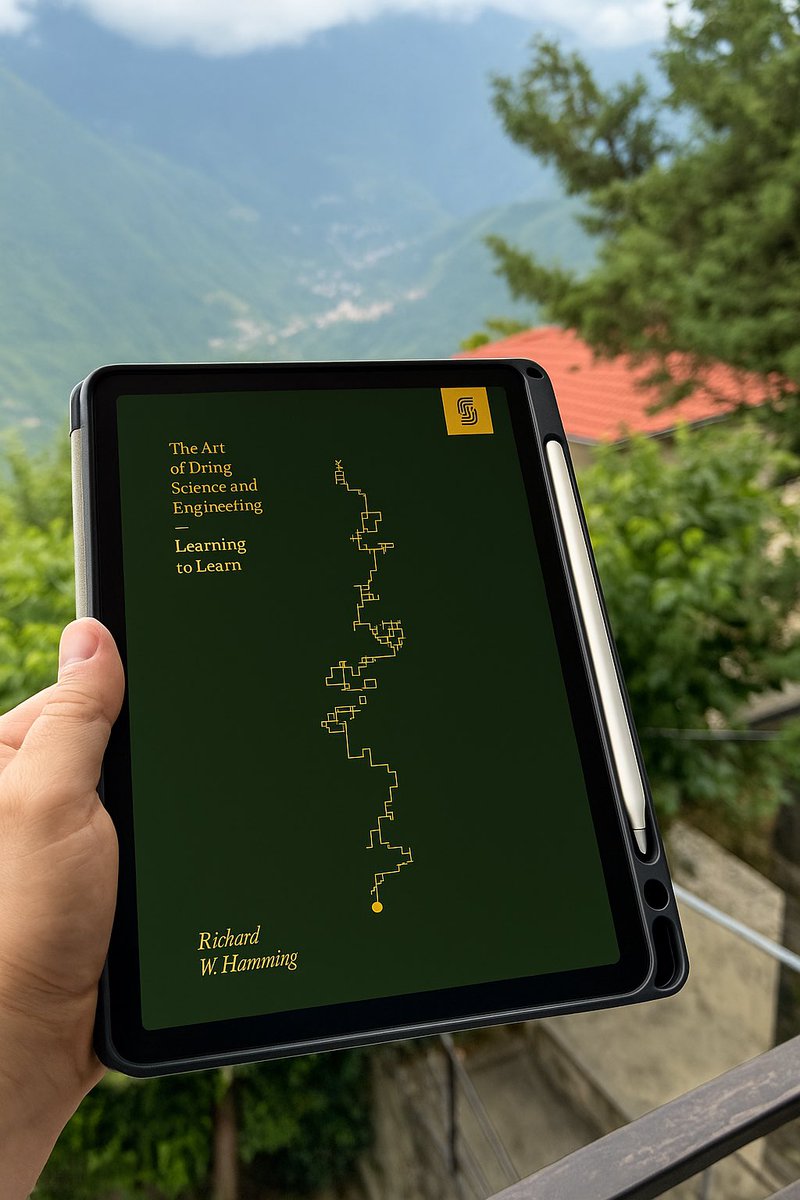[GUEST ACCESS MODE: Data is scrambled or limited to provide examples. Make requests using your API key to unlock full data. Check https://lunarcrush.ai/auth for authentication information.]  ℏεsam [@Hesamation](/creator/twitter/Hesamation) on x 31.6K followers Created: 2025-07-05 10:52:02 UTC I just finished reading “the art of doing science and engineering” by Richard Hamming, here is my honest opinion, no hypes: X. the books is a niche on a subject that me and many others are interested in, not many books out there written by experts cover it. topics like how to be more “creative” or how to do important research. “Learning a new subject is something you will have to do many times in your career if you are to be a leader and not be left behind as a follower by newer developments” X. it is a journey on how Hamming perceives the world of science. as a mathematician, computer scientist, and researcher, he has practical opinions about these subjects that are worth exploring. X. you may be bored by a lot of the chapters in which he talks about history of computing, digital filters, etc. Hamming uses many chapters (~70% of the book) covering things you didn’t expect to read when starting to read the book. he claims these chapters is necessary to learn about patterns of doing research but that’s maybe XX% of those chapters and it’s very implicit. if you want to read this book be ready to skip some parts. (i searched online and many others people also have problems with these chapters, either for their math, or irrelevance) X. it teaches you how to develop a “style”of doing research and engineering. this means what topics to choose to work on, and how. X. Hamming asked people why they were not working on the most important problems in their field. obviously he didn’t make many friends that way. but he advises you to do the same thing: identify key questions in your field, and start working on them. X. one of the key topics i liked was how the expert changes mindsets as they get older or become more famous. over time, visionaries turn into road blocks of the new generation and they resist innovation. they lose flexibility and invest their whole time solving things that may he unsolvable at the time. his example of Einstein in his later years nails it down. X. Overall it’s an amazing career book by an expert, full of insights, important questions, and advices. I believe every STEM graduate or researcher must give it a chance. Definitely worths a read. I’d say grab a copy now (prints are almost impossible to find)  XXXXXXX engagements  **Related Topics** [topics](/topic/topics) [hypes](/topic/hypes) [Post Link](https://x.com/Hesamation/status/1941449988388606393)
[GUEST ACCESS MODE: Data is scrambled or limited to provide examples. Make requests using your API key to unlock full data. Check https://lunarcrush.ai/auth for authentication information.]
 ℏεsam @Hesamation on x 31.6K followers
Created: 2025-07-05 10:52:02 UTC
ℏεsam @Hesamation on x 31.6K followers
Created: 2025-07-05 10:52:02 UTC
I just finished reading “the art of doing science and engineering” by Richard Hamming,
here is my honest opinion, no hypes:
X. the books is a niche on a subject that me and many others are interested in, not many books out there written by experts cover it. topics like how to be more “creative” or how to do important research.
“Learning a new subject is something you will have to do many times in your career if you are to be a leader and not be left behind as a follower by newer developments”
X. it is a journey on how Hamming perceives the world of science. as a mathematician, computer scientist, and researcher, he has practical opinions about these subjects that are worth exploring.
X. you may be bored by a lot of the chapters in which he talks about history of computing, digital filters, etc. Hamming uses many chapters (~70% of the book) covering things you didn’t expect to read when starting to read the book. he claims these chapters is necessary to learn about patterns of doing research but that’s maybe XX% of those chapters and it’s very implicit. if you want to read this book be ready to skip some parts. (i searched online and many others people also have problems with these chapters, either for their math, or irrelevance)
X. it teaches you how to develop a “style”of doing research and engineering. this means what topics to choose to work on, and how.
X. Hamming asked people why they were not working on the most important problems in their field. obviously he didn’t make many friends that way. but he advises you to do the same thing: identify key questions in your field, and start working on them.
X. one of the key topics i liked was how the expert changes mindsets as they get older or become more famous. over time, visionaries turn into road blocks of the new generation and they resist innovation. they lose flexibility and invest their whole time solving things that may he unsolvable at the time. his example of Einstein in his later years nails it down.
X. Overall it’s an amazing career book by an expert, full of insights, important questions, and advices.
I believe every STEM graduate or researcher must give it a chance.
Definitely worths a read. I’d say grab a copy now (prints are almost impossible to find)

XXXXXXX engagements